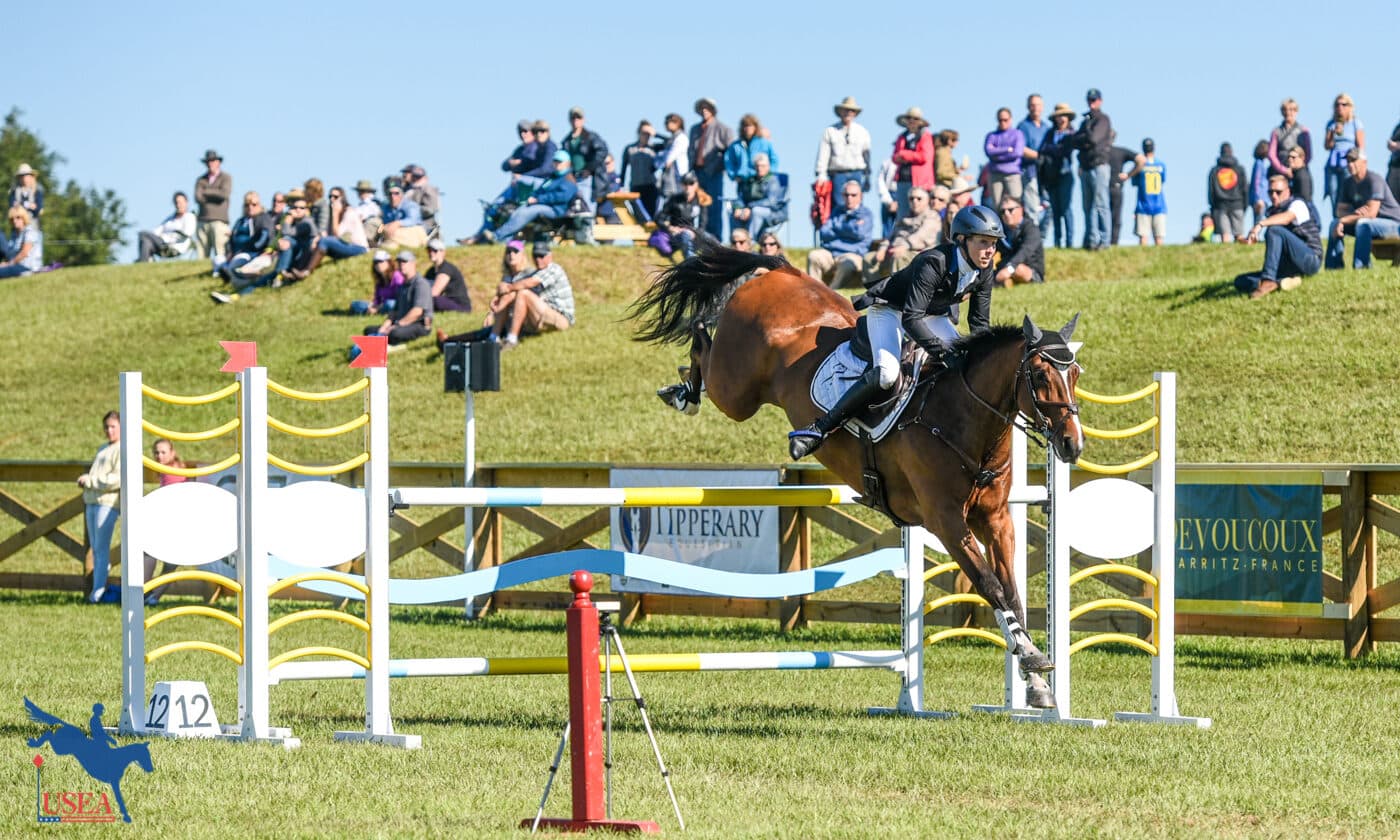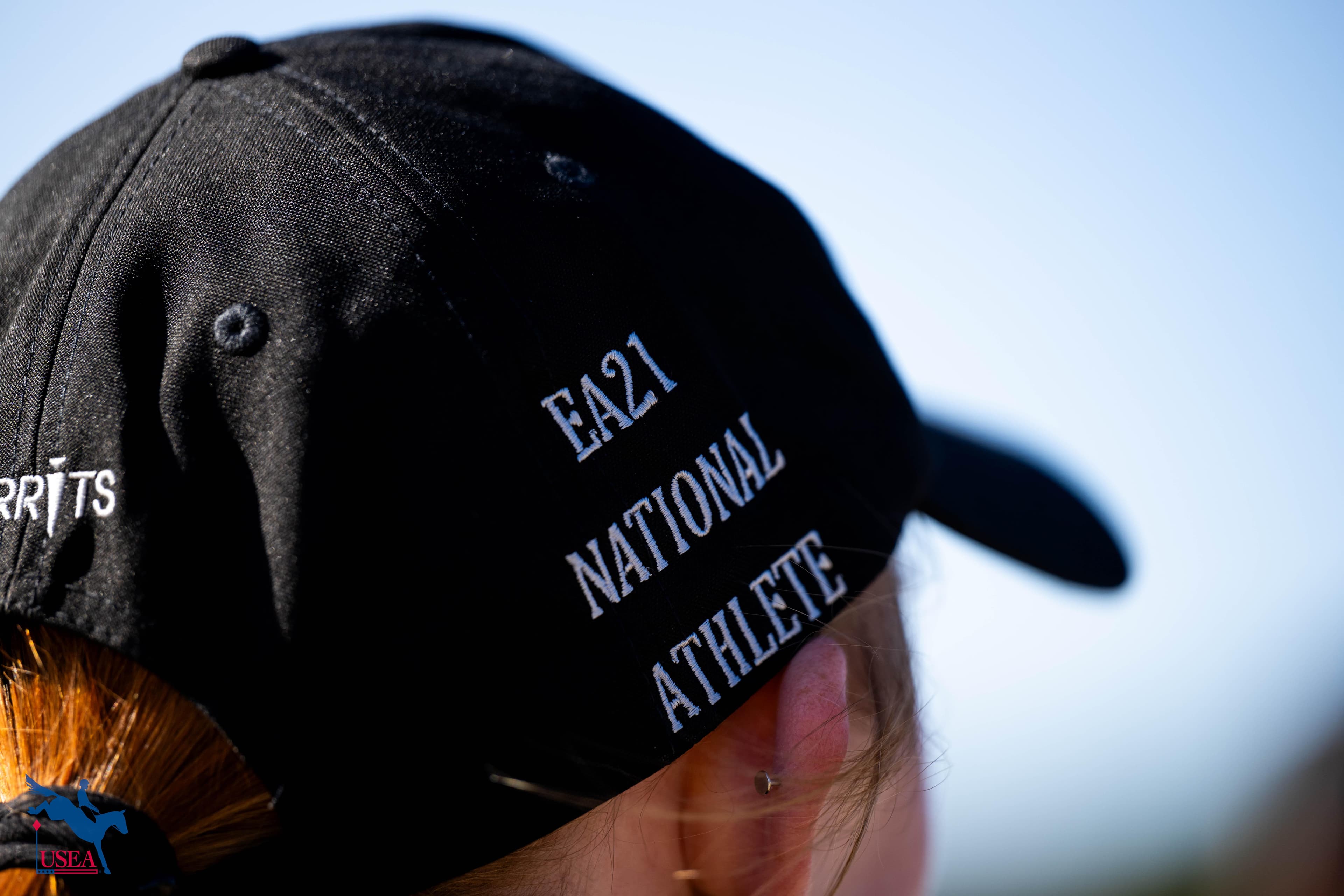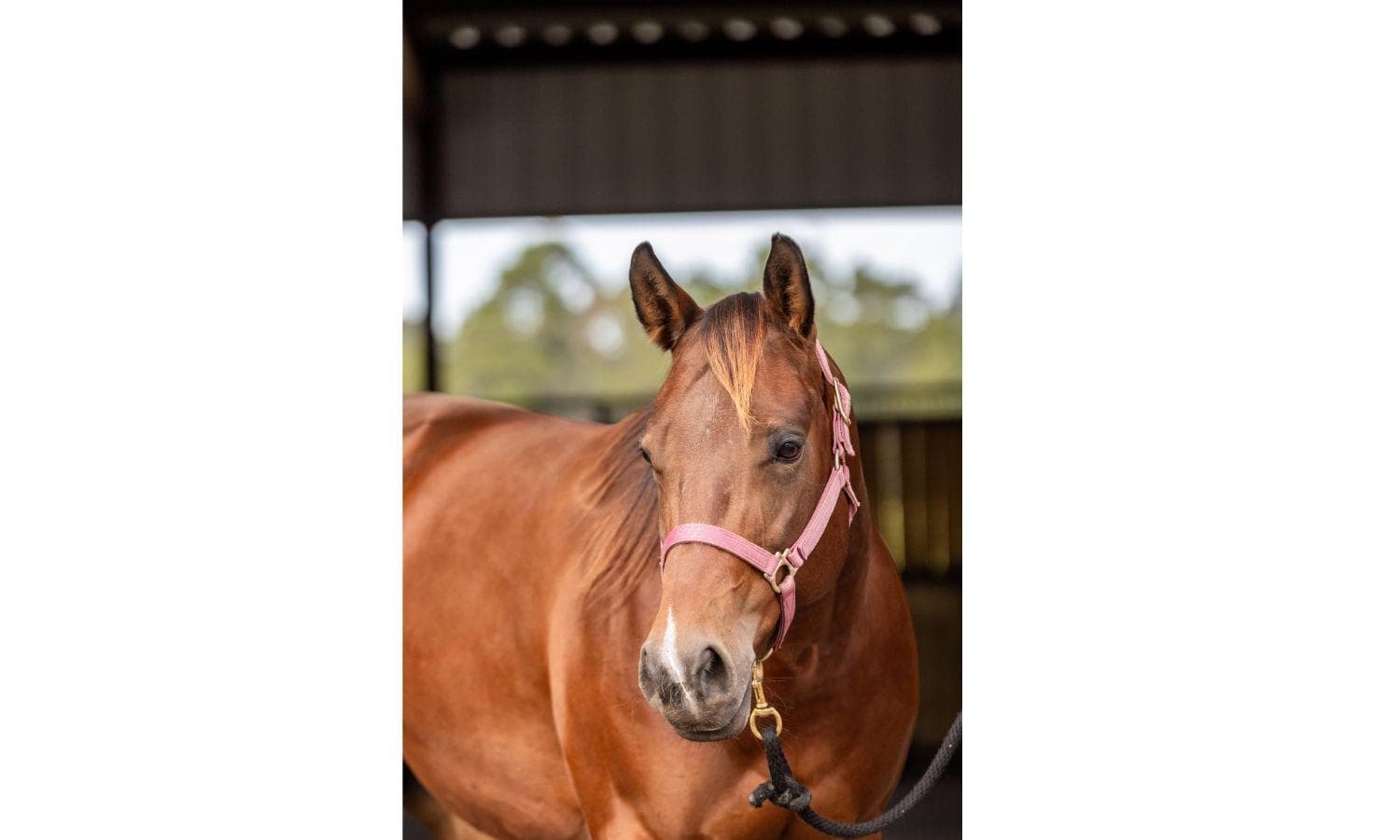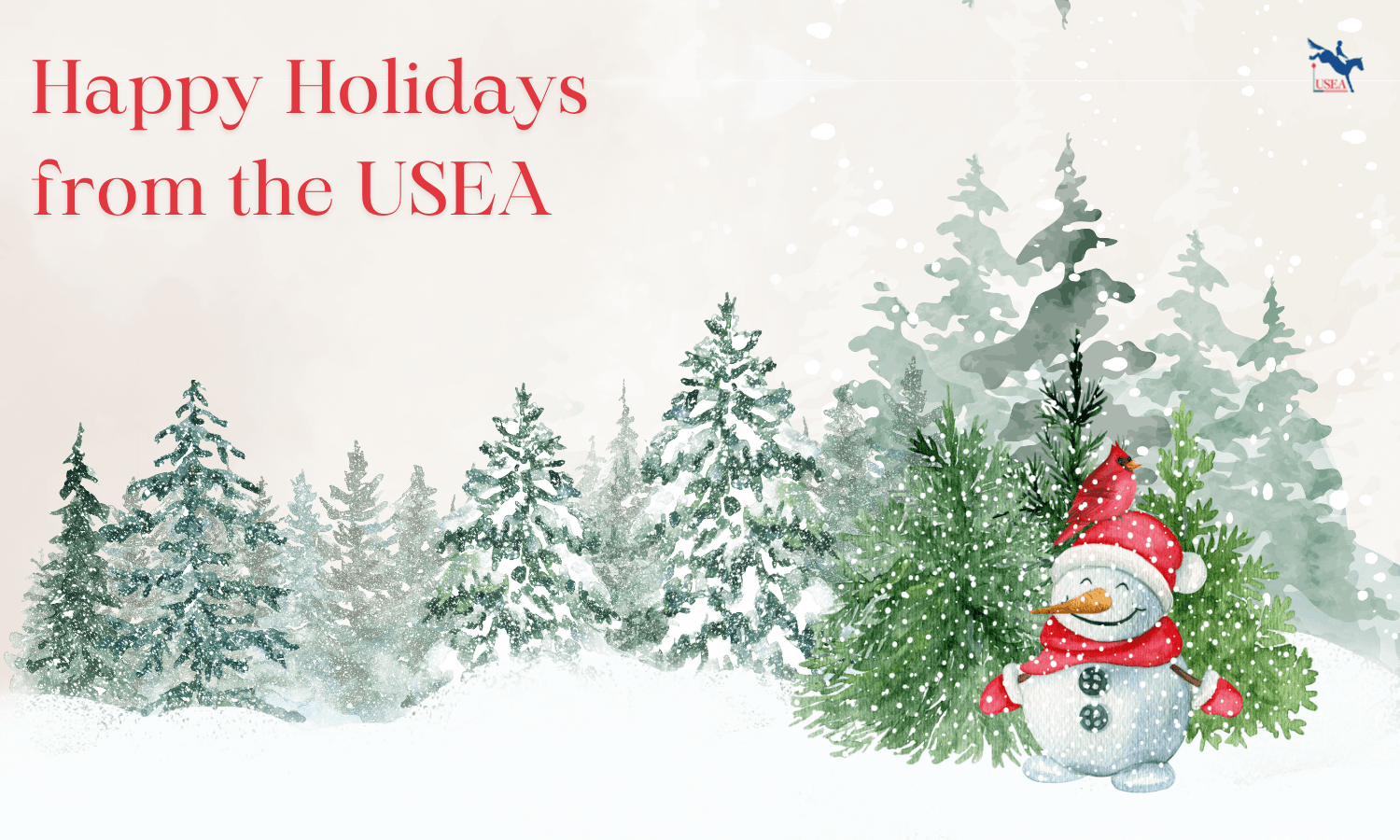USEF Updates Rulebook with Extraordinary Rule Changes

US Equestrian (USEF) has updated the USEF Rules for Eventing with the extraordinary rule changes passed at their Annual Meeting last week. These rule changes are effective as of January 1, 2019.
Changes include: the whip rules in EV111 Abuse of Horses; rules about bits, ear hoods, and stirrups in EV115 Saddlery; clarification of circles in EV142 Cross-Country; and the switch from 1 penalty to 0.4 penalty per second over time in show jumping in EV153 Faults. There were also several clarifications made to the FEI star change.
The full wording for the extraordinary rule changes are marked in bold italic text below. To catch up on non-extraordinary rule changes that went into effect on 12/1/2018 click here.
All USEA members are expected to be familiar with all USEF General Rules and USEF Rules for Eventing.
EV111 Abuse of Horses
3. WHIP. The use of the whip must be for a good reason, at an appropriate time, in the right place, and with appropriate severity.
a. Reason—the whip must only be used either as an aid to encourage the horse forward, or as a reprimand. It must never be used to vent a rider’s temper. Such use is always excessive.
b. Time—As an aid, the only appropriate time is when a horse is reluctant to go forward under normal aids of the seat and legs. As a reprimand, the only appropriate time is immediately after a horse has been disobedient, e.g. napping or refusing. The whip should not be used after elimination. The whip should not be used after a horse has jumped the last fence on a course. The whip should not be used multiple times between fences.
c. Place—As an aid to go forward, the whip may be used down the shoulder or behind the rider’s leg. As a reprimand, it must only be used behind the rider’s leg. It must never be used overhand, e.g. a whip in the right hand being used on the left flank. The use of a whip on a horse’s head, neck, etc., is always excessive use.
d. Severity—As a reprimand only, a horse may be hit hard. However, it should never be hit more than two times for any one incident. If a horse’s skin is broken or has visible marks the use of the whip will always be deemed to be excessive. BOD 12/21/18 Effective 1/1/19
EV115 Saddlery
2. DRESSAGE TEST.
a. The following are compulsory: an English type saddle and a permitted bridle. b. A double bridle with cavesson noseband, i.e. bridoon and curb bits with curb chain (made of metal or leather or a combination), is permitted for some tests. Cover for curb chain can be made of leather, rubber or sheep skin. 1. Cavesson noseband may never be so tightly fastened as to harm the horse.
2. Lipstrap and rubber or leather covers for the curb chain are optional. 3. Bridoon and curb must be made of metal or rigid plastic and may be covered with rubber/latex (flexible rubber bridoons and/or curbs are not allowed).
4. The lever arm of the curb bit is limited to 10 cm (length below the mouth piece).
5. The upper cheek must not be longer than the lower cheek.
6. If the curb has a sliding mouthpiece, the lever arm of the curb bit below the mouthpiece must not measure more than 10 cm when the mouthpiece is in the uppermost position.
7. The diameter of the ring of the bridoon and/or curb must be such as to not hurt the horse.
8. Minimum diameter of mouthpiece to be twelve millimeters (12mm) for the curb bit and ten millimeters (10mm) for bridoon bit.
c. A rounded snaffle bit made of metal, leather, rubber or plastic material is permitted for all tests.
d. Snaffles are permitted and must have a minimum diameter of fourteen millimeters (14 mm). For ponies the minimum diameter shall be ten millimeters (10 mm). The diameter of the mouthpiece is measured adjacent to the rings or the cheeks of the mouthpiece. The reins must be attached to the bit.
e. It may have a cavesson noseband, dropped noseband, crossed noseband, or flash noseband.
1. The noseband must be made entirely of leather or leather like material, except for a small disc of sheepskin, which may be used in the intersection of the two leather straps of a crossed noseband.
f. A breast plate may be used. For drawings of permitted bits and nosebands see Annex 1on the USEF website for Approved Bits for National Competitions. Permitted bits for a particular test are specified on each test.
g. Martingales, bit guards, any kind of gadgets (such as bearing, side, running or balancing reins, etc.), reins with any loops or hand attachments, any kind of boots or leg bandages and any form of blinkers, including earmuffs, earplugs, hoods, and seat covers are, under penalty of elimination, strictly forbidden.
h. Shoes (with or without cuffs) that are attached with nails or glue, or wraps that do not extend past the hair line of the hoof are permitted.
i. Ear hoods are permitted for all Tests and may also provide noise reduction. However, ear hoods must allow for ears to move freely and must not cover the horse’s eyes and ear plugs are not permitted (exception for prize giving ceremonies). The ear hoods should be discreet in color and design. Ear hoods may not be attached to the noseband. BOD 1/20/18 Effective 12/1/18 BOD 11/12/18 Effective 12/1/18
3. CROSS-COUNTRY TEST AND JUMPING TEST.
a. The following are compulsory: an English type saddle and bridle or hackamore. Any form of blinkers are forbidden.
b. Only unrestricted running martingales with rein stops or Irish martingales are allowed. Reins must be free of any loops or hand attachments and must be attached to the bit(s) or directly to the bridle. Exception: u-shaped bit converters may be used so that a bit designed for use with two reins may be controlled with a single rein. Gags or hackamores are allowed. In the interest of safety, the stirrup iron and stirrup leathers must hang free from the bar of the saddle and outside the flap. For cross-Country, any device which does not allow an immediate and unrestricted separation of the Athlete’s boot from the stirrup in case of a fall is forbidden. There must be no other restrictions or attachments of any kind. BOD 12/21/18 Effective 1/1/19
EV142 Cross-Country—Definitions of Faults (Drawings, Appendix 7)
3. CIRCLES.
a. At an obstacle composed of several elements (A, B, C, etc.) a horse will be penalized once it has jumped the first element and before it has jumped the last if:
1. It passes around the back of any element of the lettered combination that it subsequently jumps.
2. It crosses between the elements. BOD 12/21/18 Effective 1/1/19
EV153 Faults
Exceeding the time allowed 0.4 penalty per commenced second BOD 12/21/18 Effective 1/1/19














